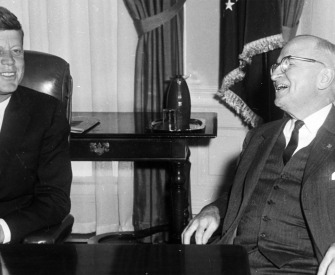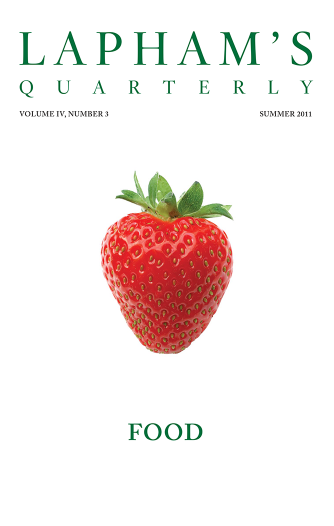Jesters do oft prove prophets.
—William Shakespeare, 1605Split Personalities
Is it a condition of comic genius to be always wrestling with demons?
By Andrew McConnell Stott
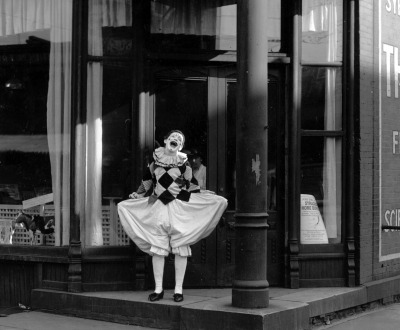
"Cho-Cho" the health clown, who visited schools around 1920. Cornell University Library.
Mildred Harris was only nineteen years old when she sued for divorce, although she may have been even younger. Her career in movies had begun sometime between the ages of nine and twelve, depending on who was asking. Either way, she was far younger than her husband, who, at thirty-one, was the most famous man in the world—and was leading a double life.
Harris first met Charlie Chaplin at a party at Samuel Goldwyn’s beach house in the fall of 1917. He offered her a ride home, resulting in a yearlong affair, a pregnancy, and a hurried wedding. Their child survived only three days, its sad little death a cipher for their unflourishing marriage. In the courtroom, Harris told the judge of the unhappiness she had experienced as the wife of the funniest man alive. Chaplin neglected and mistreated her, she said. He brooded and was rarely home, abandoning her to go off with his friends for up to six weeks at a time, or leaving her alone at night as he spent hours stalking the streets in search of ideas. When he was around, he criticized her constantly, correcting her manners, censoring her dress, and refusing her money, despite his commanding a salary of $670,000 a year. Her friends were unwelcome at their house, and if she ever went out alone, he hired detectives to follow her. Among the few people she was allowed to see were her ever-present mother and the men Chaplin would bring home for dinner. “But such men!” Harris lamented. “Old, grave, and intellectual men! They were fifty years old or more. They talked of things I could not possibly understand. I was seventeen. What could I know of philosophy, or of Voltaire or Rousseau or Kant?”
Chaplin had hoped to cultivate the mind of his young wife, which he found “cluttered with pink-ribboned foolishness.” According to Harris, this meant he read long, boring books out loud and rehearsed the tragic roles he harbored secret ambitions to play. Mildred once mistook something he said for a joke and began to laugh, but soon realized her error as he flew into a fury and called her names. When they divorced in 1920, on grounds of mental cruelty, she received $200,000. “It has been said that a comedian is only funny in public,” she complained to the Washington Times. “I believe it. In fact, I know it. Charlie Chaplin, who has made millions laugh, only caused me tears.”
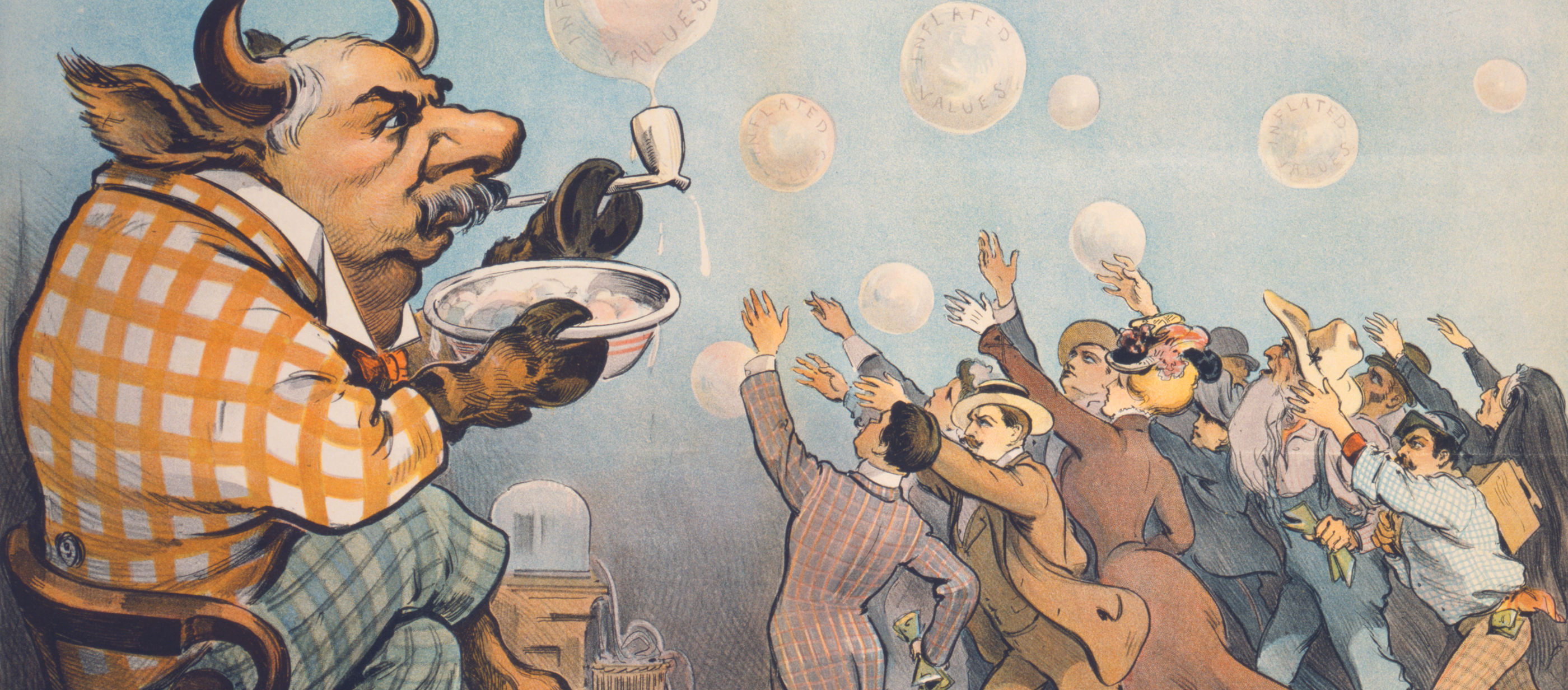
Wall Street Bubbles—Always the Same, by Joseph Keppler Jr., 1901. Caricature of J. P. Morgan as a bull blowing bubbles representing inflated values. Library of Congress,
Chaplin did little to deny it. He appeared to suffer bouts of melancholy when he first became famous, and when the journalist and poet Benjamin De Casseres came to speak to him around the time of his divorce, the actor’s condition had escalated to full-blown despair. “There are days when contact with any human being makes me physically ill,” Chaplin told him. “I am oppressed at such times and in such periods by what was known among the Romantics as world-weariness. I feel then a total stranger to life.”
Was this proof that the Chaplin projected on the screen was exactly that, an insubstantial phantom concealing the true identity of the man? “He has clowned, cavorted, and somersaulted in every city, town, and mining camp in the civilized and uncivilized world,” wrote De Casseres, “but there is no man I have ever met who, intellectually and emotionally, comes nearer to the Hamlet type of being than Charles Spencer Chaplin, planetary clown, whose stage personality is better known than any other human being who has thus far been born on this star and who has more completely hidden his real personality than any other world figure.” Chaplin, beloved of millions and known around the world, was walled off, Midas-like, from the very gift that others revered in him. De Casseres’ conclusion was emphatic: “I have never met an unhappier or a shyer human being than this Charles Spencer Chaplin.”
Is it a condition of comic genius to be perpetually wrestling with demons? From Canio, the iconic, stiletto-wielding clown of Ruggero Leoncavallo’s 1892 opera, Pagliacci, to modern greats like Richard Pryor, Andy Kaufman, and John Belushi, it would seem so. Even in Chaplin’s day, the depressed and often violent clown was a well-established trope, both offstage and on. Hollywood Pagliacci types included Frank Tinney, the blackface vaudevillian accused of brutally assaulting his mistress; Roscoe “Fatty” Arbuckle, whose brilliant career was undone by the untimely death of Virginia Rappe, a bit-part actress who suffered a fatal trauma in his hotel room; and the suave French comedian Max Linder, brought in by Essanay Films to replace Chaplin after the tramp had departed the studio but who failed to replicate his predecessor’s success. Suffering from a severe depression that was deepened by service in the Great War, Linder claimed he could practically feel the ability to be funny seeping out from him. In February 1924, he and his young wife, Ninette, a wealthy heiress, made a suicide pact at a hotel in Vienna but failed to consume a sufficient dose of sleeping powders. The following autumn in Paris they were better prepared. Both drank large drafts of barbiturates before injecting morphine into their veins and slitting their wrists. Chaplin dedicated a film to his replacement, declaring himself Linder’s disciple.
That comedy is a mansion built on tragic foundations was a theory given credence by Sigmund Freud. “A jest betrays something serious,” he wrote in Jokes and Their Relation to the Unconscious, which argued that humor was a means of circumnavigating taboo and repackaging unpalatable thoughts into digestible form. At the heart of Freud’s argument is a reluctance to accept comedy on its own terms as comedy, viewing it rather as a proxy for something kept hidden. For Freud, Chaplin was “a particularly simple and transparent case” of someone who used humor to explore the darker states of mind. Writing to his friend Max Schiller, Freud commented how Chaplin always seemed to play the same part:
The weak, poor, helpless, clumsy young man for whom things turn out right in the end. Do you think he has to forget his own ego for this role? On the contrary, he only acts himself as he was in his bleak youth. He cannot escape from those impressions, and even today he is compensating himself for the deprivations and discouragement of that period.
It’s a familiar idea: comedy as compensation, a means of bolstering that wounded, second self. But how much of this is a psychological fact, and how much an expectation on the part of the public that comedians are made this way? Certainly, the concept of duality has been inherent in comedy for centuries. From Dionysus and his servant Xanthias in Aristophanes’ The Frogs to Shakespeare’s The Comedy of Errors, Moliére’s plays of feigned identity, and the first double acts of nineteenth-century music halls, the theme of doubling is ever present. That comedians, rather than comedies, should be seen as divided is merely a projection of this theme onto the performers themselves.
The first doubled comedians were the first professional comedians, the comic actors who plied their trade as professional theaters emerged during the late sixteenth century. It was these men for whom the word comedian was coined, a designation that sought to describe the nature of their labor by placing them within a strict generic context. Prior to this moment, it was not possible to define comedy so neatly, nor could it be so closely associated with particular individuals. Rather, it existed as part of the much wider category of “fooling,” a diverse and multi-faceted portmanteau of spectacles that might include jugglers, acrobats, and simpletons as much as it did jesters and wits. Medieval fooling could also incorporate a mystical dimension, imagining the fool as both scapegoat and scourge, a quasi-apocalyptic Everyman who stood to remind us of the principle listed by St. Paul in his first letter to the Corinthians: “The wisdom of this world is foolishness before God.”
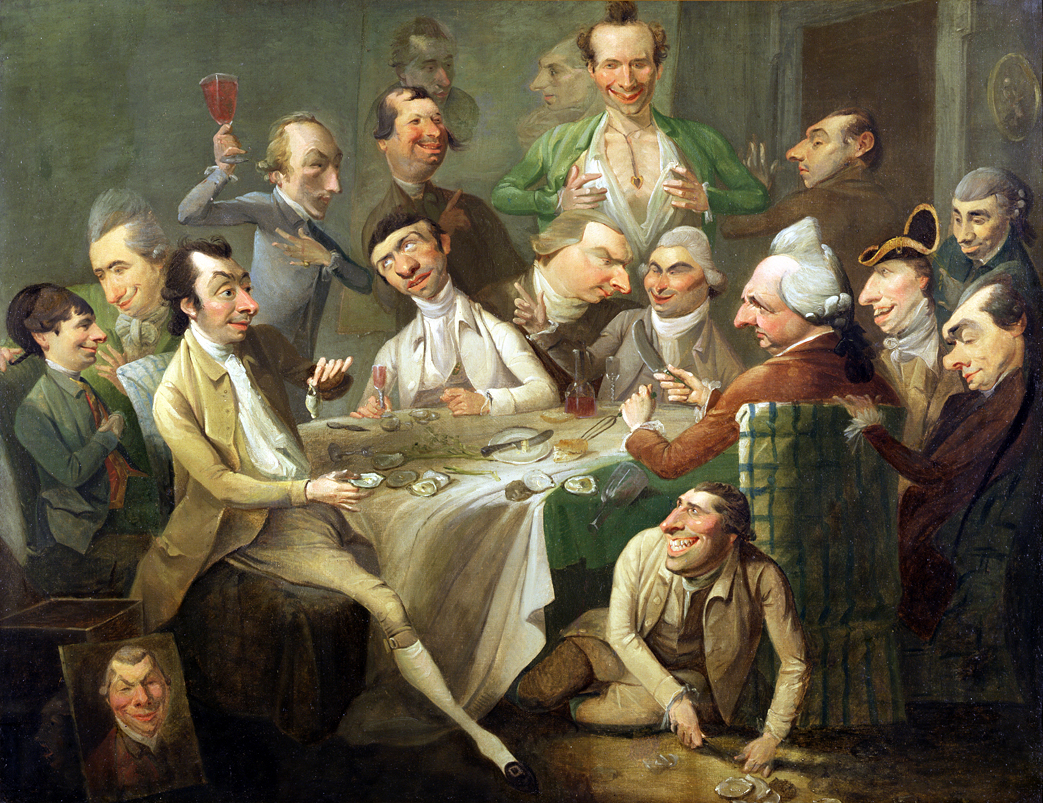
A Caricature Group, by John Hamilton Mortimer, c. 1766. Yale Center for British Art.
Where the medieval fool was a type as opposed to an individual, the early modern men who followed were professionals contracted to appear in performances bounded by the generic expectations of comedy. Of these comedians, Robert Armin, a member of Shakespeare’s company, was particularly successful at crafting a sense of himself beyond his roles. Armin was a writer as well as a performer, publishing books of his routines and descriptions of notable fools that suggest an almost academic interest on his part in the lineage of his profession. It was also Armin who was instrumental in transforming the clown of the Shakespearean stage from the jigging buffoon of the earlier plays into the drier and more verbal wit of As You Like It, King Lear, and Twelfth Night. His performance as the detached and moody Feste in Twelfth Night provided a particularly revealing portrait of the professional comedian, for while Feste’s name suggests festivity and song, the character himself makes it plain that he is the embodied spirit of nothing, merely a performer for hire, singing for his supper but keeping his distance when no one is willing to pay.
The sense of one life lived center stage and another lived behind the curtain became more entrenched during the Restoration, with the avalanche of cheap theatrical biographies encouraged by the expansion of theatrical culture. Such biographies trafficked in the emerging concept of celebrity, a currency distinct from the ancient concept of fame, which was founded on notions of honor, heroism, saintliness, and imperial majesty. Whereas fame dealt in notable deeds, celebrity sprang from a kind of augmented personhood—the belief that those who were subject to the gaze of many must be inherently interesting. Onstage, a performer might be mesmerizing, but this was merely an intimation of the rich personality that must lie beneath.
Of the various comedians who became celebrities of the stage, none were more famous than the pantomime clown Joseph Grimaldi. Grimaldi, the son of an Italian ballet master and an English dancer at Drury Lane, rose to prominence in the first decade of the nineteenth century as the star of Regency pantomime, the seasonal extravaganzas that blended children’s fairy tales with special effects and fast-paced, slapstick harlequinades to create performances so compelling that they were seen by an eighth of the London population each year. Grimaldi had been raised in the theater and began his first performances almost before he could talk, yet it was his appearance in Thomas Dibdin and Charles Farley’s Harlequin and Mother Goose; or, the Golden Egg at the age of twenty-eight that truly propelled him to fame. The show, which debuted at the Theatre Royal, Covent Garden on December 29, 1806, was standard pantomime fare which, thanks to Grimaldi’s clowning, became an unprecedented success, running for 119 nights and generating over £20,000 in profits, saving the theater from financial ruin.
A jest breaks no bones.
—Samuel Johnson, 1781Grimaldi was truly gifted as a physical comedian—he had a mobile face and an agile body on which were inflicted endless comic punishments—and he was resourceful when it came to constructing stage business. Yet Grimaldi’s most enduring contribution to the history of comedy was his innovation in the area of stage makeup. Prior to his time, the appearance of stage clowns—as rustic servants in stained smocks with a circle of rouge on each cheek—had remained largely unchanged since the Elizabethan era. Grimaldi completely reinvented the look by transforming the clown from doltish menial to overgrown child, replacing the old costume with a colorful, stylized version of the ruff and short trousers worn by students at Regency boarding schools, and expanding the makeup so that it encompassed every inch of exposed skin. He was the first to use white foundation that covered not only the face but the hands, neck, and even the ears, lips, and insides of the nostrils. To this he added a wide red mouth, arched eyebrows, and a large chevron on each cheek. The whole was topped off with a loud wig, and the new creation dubbed simply “Joey.” Whiteface clowns have been known by that name ever since.
The vivid makeup was also essential if Grimaldi was to be seen from the back of the theaters that had grown from smallish auditoriums to vast dominions of entertainment, some able to accommodate over four thousand people for three or four hours a night. Yet the total absorption of the performer in the makeup also served to suggest a much stricter division between the man and his creation. As such, Grimaldi and his clown came to be seen as distinct entities, even enemies, engaged in a battling but reciprocal relationship.
Rumors began to circulate about Grimaldi’s private life almost as soon as he became a celebrity, rumors that not only dogged him for the rest of his career but would also shape the way comedians have been conceived of ever since. Newspapers claimed that, when not onstage, Grimaldi was somber and prone to depression. As soon as Mother Goose closed, one periodical wrote that he was “resolved to betake himself to sackcloth and ashes!,” reports he himself chose to confirm with a punning quip: “I am grim all day, but I make you laugh at night.” Without doubt, the apex of these rumors was an anecdote that appeared some time in the 1820s and is still used, frequently misattributed, even to this day. The story involves Grimaldi’s reported visit to the famous surgeon John Abertheny, to whom the clown had gone in search of a cure for his melancholy. Abertheny, unable to identify his patient without his slap and motley, briskly prescribed the diversions of “relaxation and amusement”:
“But where shall I find what you require?” said the patient.
“In genial companionship,” was the reply; “perhaps sometimes at the theater—go and see Grimaldi.”
“Alas!” replied the patient. “That is of no avail to me; I am Grimaldi.”
Grimaldi’s moment coincided with developing attempts in psychology to understand the hidden reaches of the brain. In 1815, a Dr. Dyce of Aberdeen reported the case of a sixteen-year-old servant girl named Maria who would take on different personalities after she fell asleep. As Maria would set the table and dress the children with her eyes half-shut, this was initially thought to be a simple case of sleepwalking, until her episodes began to take on a more unusual cast. During one she acted the role of an Episcopal clergyman conducting a baptismal ceremony on the children in her care, and in another believed herself to be riding in a horse race as she jockeyed a stool across the kitchen floor. With each new visitation, these personas grew more complex, until eventually she reached a point where she had developed two distinct identities, each with its own consistent and unbroken memories but entirely separate from the other. So utterly divided were the two identitities that one of her fellow maids took advantage of her altered consciousness to arrange her rape, an incident to which the girl was entirely oblivious until she returned to that state several days later.
A similar case was reported the following year, concerning Mary Reynolds, an émigré from Birmingham, England, who had settled in Oil Creek, Pennsylvania. Reynolds’ condition began as a series of occasional fits, until in 1811 she suffered an extreme convulsion that left her deaf and blind for several weeks. It seemed that she had made a full recovery, but soon after, she lost all recollection of her surroundings, so that her family became strangers, and she could not read, write, or perform even the most basic domestic tasks. After five weeks like this, she woke up one day completely restored and with all her memories intact. Three weeks later, she was changed again. And so she lived her life, transitioning from one state to the other for varying lengths of time. As with Maria, the serving girl from Aberdeen, as time passed, each personality began to grow and develop on its own timeline. Whatever she learned or experienced in her secondary state stayed with her, and when she returned to it, she would pick up where she had left off, with all her memories from that state preserved. Her new personality was markedly different from the first, far more witty, talkative, and imaginative. She wrote poetry and cultivated a whole new set of friends, having decided that she didn’t much like the ones from her original state. It was decided that Mary was suffering from “a twofold consciousness, or, more definitely, with two distinct consciousnesses.”
Phrenology, the pseudoscience which held that personality traits could be read from the contours of the skull, was thought to be capable of explaining this phenomenon. In the dissecting room, phrenologists such as Johann Spurzheim, the protégé of the field’s founder, Franz Joseph Gall, had noted that, just as the body is a mirror image of itself, with two arms, two legs, two eyes, and so on, so the double hemispheres of the brain replicated this pattern. During his popular lecture tours around England in 1814 and 1825, Spurzheim expounded on this theory. “In giving the histories of cerebral injuries,” wrote Spurzheim,
the duplicity of the nervous system has very generally been forgotten…Tiedeman relates the case of one Moser, who was insane on one side, and observed his insanity with the other. Dr. Gall attended a minister similarly afflicted; for three years he heard himself reproached and abused on his left side; with his right he commonly appreciated the madness of his left side. Sometimes however, when feverish and unwell, he did not judge properly. Long after getting rid of this singular disorder, anger, or a greater indulgence in wine than usual, induced a tendency to relapse.
Spurzheim’s insights are clearly reflected in the great interest writers of Romantic literature would come to take in the theme of the double, in novels such as Mary Shelley’s Frankenstein (1818), Charles Maturin’s Melmoth the Wanderer (1820), and James Hogg’s Private Memoirs and Confessions of a Justified Sinner (1824), all featuring characters who are plagued by an odious other. The apotheosis was reached in Robert Louis Stevenson’s The Strange Case of Dr. Jekyll and Mr. Hyde, whose unfortunate protagonist came to understand that his mind was constituted of “polar twins” in constant struggle, neither of whom could lay claim to absolute sovereignty over the other. “I saw that, of the two natures that contended in the field of my consciousness,” says Jekyll in his testimony, “even if I could rightly be said to be either, it was only because I was radically both.”
The example most pertinent to the history of comedy, however, is the degree to which the theme of doubling permeates one of Charles Dickens’ earliest works, The Memoirs of Joseph Grimaldi (1838). Dickens was reluctant to take the commission to transform Grimaldi’s naive brick of handwritten text into a readable book, but eventually having agreed to it, he finished it in a matter of weeks. Such haste and lack of care is evident throughout the text: one struggles to find innate literary merit, aside from a marked insistence on portraying the clown’s life in stark contrasts of black and white. Dickens’ Grimaldi lives in a finely tuned world in which every triumph, personal or professional, is balanced by commensurate pain. “It is singular enough that throughout the whole of Grimaldi’s existence,” writes Dickens, “which was a checkered one enough, there always seemed some odd connection between his good and bad fortune; no pleasure appeared to come to him unaccompanied by some accident or mischance.”

Crispin and Scapin, by Honoré Daumier, c. 1864. Musée d'Orsay, Paris, France.
The pattern was repeated throughout Grimaldi’s life: the moment his first wife, Maria, accepted his proposal of marriage, Grimaldi was instantly flattened by a “heavy platform on which ten men were standing,” resulting in a broken arm. He found £599 on a street near Tower Hill, only to have exactly the same amount embezzled from him by a confidence artist. He attained his hard-won ambition of being chosen over an archrival to become principal clown at both Sadler’s Wells and Drury Lane theaters just as Maria died in childbirth, placing Grimaldi in the position of having to go onstage even in the depths of mourning, setting “the audience in a roar; and chalking over the seams which mental agony had worn in his face, was hailed with boisterous applause in the merry Christmas pantomime!” And so it continued over the years, until at last his exertions became too much and he was forced into early retirement, in which “the light and life of a brilliant theater were exchanged in an instant for the gloom and sadness of a dull sickroom.” Thanks to Dickens’ impeccable feel for narrative structure, instead of a faithful biography, we are given an elegy for a comedian who has sacrificed his health and his happiness for laughter. Thus Grimaldi becomes the first fully realized example of the clown with a double life.
Chaplin made a brief appearance as a Grimaldi-style clown in one of his final films, Limelight (1952), the last movie he made in America before sending himself into exile. Chaplin played Calvero, an aging alcoholic comedian who nurses a beautiful ballerina back to health after she has tried to commit suicide. The Grimaldian shade is the perfect complement to a film that has an entirely funereal feel to it, with its meditation on the passage of time, the waning of celebrity, and the diminution of comic potency. “What a sad business, being funny,” says the ballerina as Calvero recounts the events of his life.
Is this true, or had Chaplin fallen for his own mythology? Does a talent for comedy necessitate a tragic life? Are comedy and happiness truly incompatible? Common sense says no—there are countless comedians who have lived normal, well-adjusted lives without succumbing to depression, insanity, or suicide. So why is it so hard to think of one? It would seem that Chaplin, like the many who followed in Grimaldi’s wake, found it hard to resist the powerful narrative that set expectations for his happiness. The comedian’s split personality reveals what we ultimately believe comedy to be. Whereas in the Middle Ages fooling was seen as an expression of the cosmic absurdity of being alive, the modern world views it as a symptom of personal distress. In Grimaldi’s day, misery was the grit in the oyster that grew the pearl and gave substance to the otherwise trivial world of pantomime. Suffering ennobles, and when comedians suffer, we are more willing to see their work as flowing from the same font as the profoundest art. We want our comedians to be tortured; only then can we really laugh.
